The Mars Observer spacecraft in the clean room.
Click on image for full size
NASA/JPL
Mars Observer
The Mars Observer set out to observe
the atmosphere , magnetic field, and
surface of
Mars. It carried with it 8 instruments. However, the Mars Observer (called MO for short) failed on August 21, 1993, just before entering Martian orbit. Over the long cruise from Earth to Mars, some of the fuel leaked into the engines. When the engines were ignited for orbit entry, the fuel tanks blew up!
Out of the failure of Mars Observer came the Mars Surveyor Program. Some of the same instruments developed for the Mars Observer were used for the Mars Global Surveyor mission, Mars '98 missions and Mars 2001 Odyssey mission which launched in April 2001.
You might also be interested in:
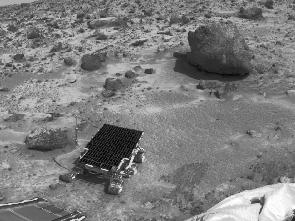
Because of the failure of the Mars Observer (MO), NASA planned a new Mars Surveyor Program. The Surveyor Program was designed to explore all of the things the MO was suppose to, and a lot more. The Surveyor
...more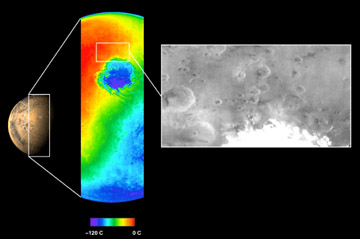
The Mars Odyssey was launched April 7, 2001, from Florida. After a six-month, 285 million-mile journey, the Odyssey arrived at Mars on October 24, 2001. The Odyssey is in its aerobraking phase right now.
...more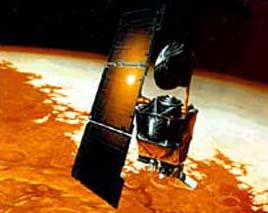
Last Thursday was supposed to be a great one for NASA, but turned out to be a disaster. The Mars Climate Orbiter was scheduled to begin its orbit around the Red Planet early that morning. However, during
...more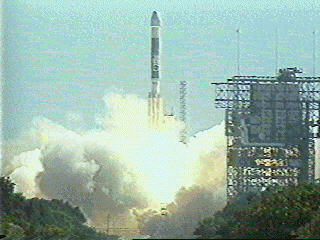
It has been more than 30 years since America's first exploratory missions to Mars. Here are some of the instruments carried onboard Mars Global Surveyor (called MGS for short). Many of these instruments
...more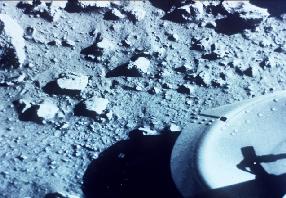
The Viking I and Viking 2 missions were designed to both orbit Mars and land and make exploratory observations on the planet's surface. At this stage in the history of the exploration of Mars, scientists
...more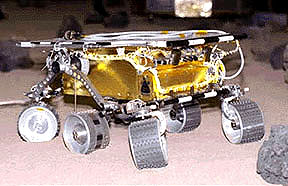
The Mars 2005 mission is still in the planning stages. It is set to launch in the year 2005.
...more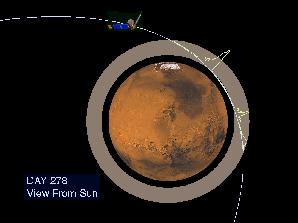
The Mars Global Surveyor reached Mars in September of 1997. But it didn't make it into its final mapping orbit until February 1999. What took so long? Surveyor needed to reach a near-circular, low-altitude
...more















